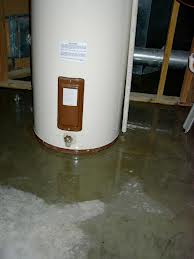

When it does, it condenses.Īnd this is where the PVC exhaust pipe or flue pipe comes in handy. When a high-efficiency furnace uses a secondary heat exchanger to produce more heat, it causes the produced gasses to cool down. However, high-efficiency furnaces also potentially expose your furnace to water, as some do not have a condense pipe connected to a waste pipe. Obviously, this is something that you would prefer. Now, what does this have to do with leaking water from the overflow pipe?Ī high-efficiency furnace comes with 90% or more of the energy produced. You can find these at the back of the furnace. On the other hand, standard-efficiency furnaces drain through a metal exhaust pipe. High-efficiency furnaces come with a white plastic pipe (PVC exhaust pipe) that drains it. The high-efficiency furnaces will have yellow stickers on the unit with their corresponding AFUE ratings. If it is below 90 AFUE, what you have is a standard-efficiency furnace. It means that your furnace comes with a 90% energy efficiency. So, how do you tell one furnace from the other? Check the AFUE Ratingsįurnaces that come with a 90 AFUE (Annual Fuel Utilization Efficiency) rating are high-efficiency furnaces. If you have a standard-efficiency furnace, it does not condense at all High-quality furnaces do. It is because standard-efficiency furnaces do not leak water at all. Water that leaks in your furnaces during winter only happens in high-efficiency furnaces. High-Efficiency versus Standard-Efficiency Furnaces More than 80% of the time, water from furnaces happens with high-efficiency gas furnaces.īefore we look at the most common reasons for condensation in your furnace, let’s look at how you can identify the type of furnace you have. The first thing that you have to do is to educate yourself about these two types of furnaces. There are two types of furnaces: high-efficiency gas and standard-efficiency gas. Let’s start with the root causes of furnace leaks or condensation leaks. Imagine dealing with an overflowing sink, water dripping, expansion vessel failing, and furnace leaking water on your own in the middle of the night – sounds terrible, right?īut we are here to expand your knowledge of the common causes of these plumbing emergencies. Issues with a toilet overflow pipe, float valve, expansion tank, floor drain, PVC pipe, toilet cistern, water pipe, and any part of your plumbing system are too challenging to understand and handle. Reasons Behind Furnace Leaking Water From Overflow Pipe Here, I will teach you about the most common reasons why you see condensation from a furnace and how you can stop them from escalating. The leak water can actually damage your plumbing systems in the long run. And like issues with your air – conditioner, indoor air, and internal drain, you would need the help of a certified plumber to save yourself from exaggerated costs and severe property damage.įor instance, a pool of water that you find around your furnace can result in mold, flooding in your furnace room, or, worst of all, flooding inside your furnace.

Most of the water that comes from furnace issues is easily resolved. And one of the most popular reasons is a damaged condensation drain.Ī leaking overflow pipe isn’t really a problem. There are many reasons why water drips in your furnace from that overflow pipe. Yes, this will ruin the flow of your plumbing system, at least not immediately. Lucky you, this is not as tragic as you might think it is.

The moment you find water around your furnace seems like the end of the world for you.


 0 kommentar(er)
0 kommentar(er)
